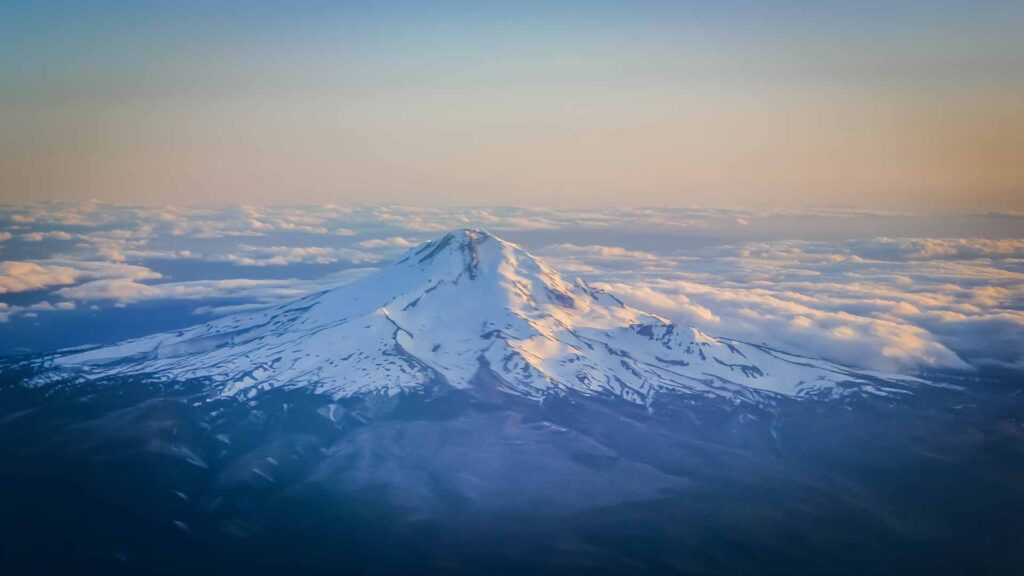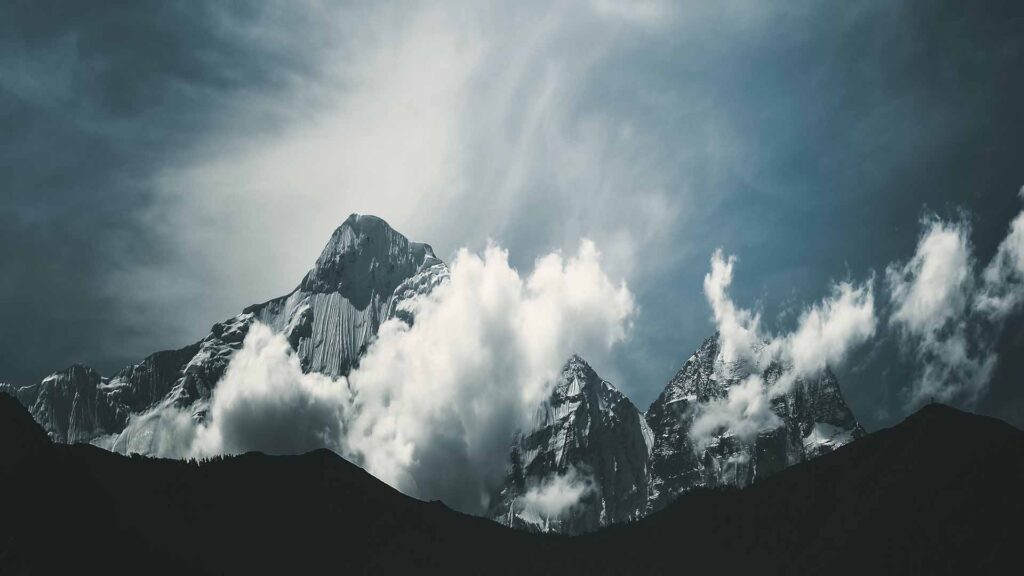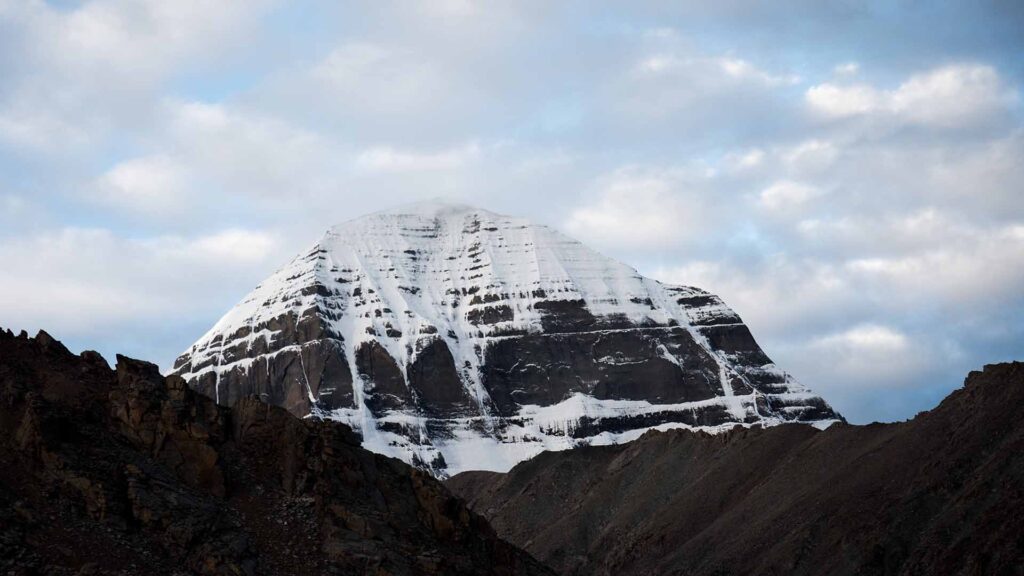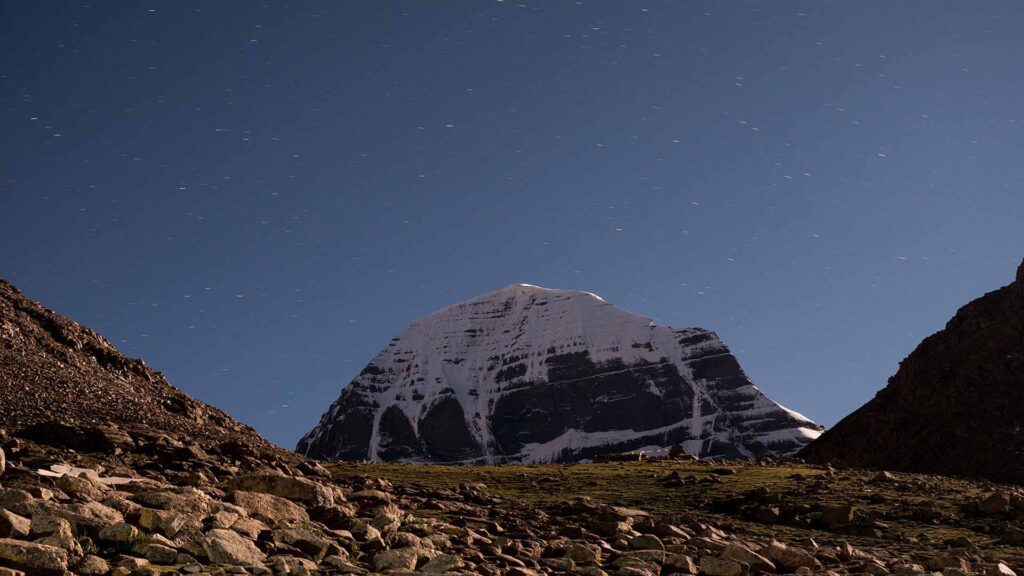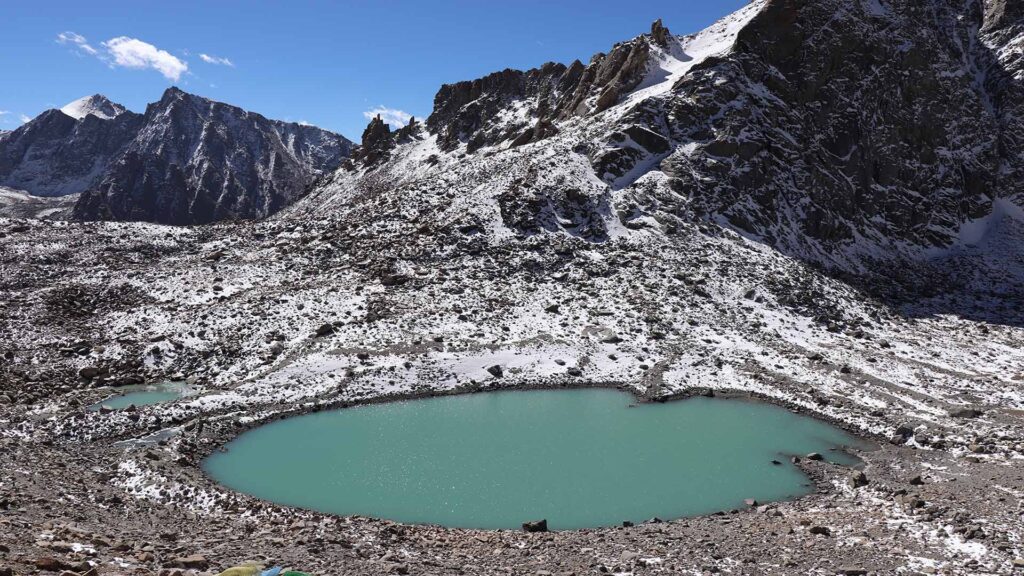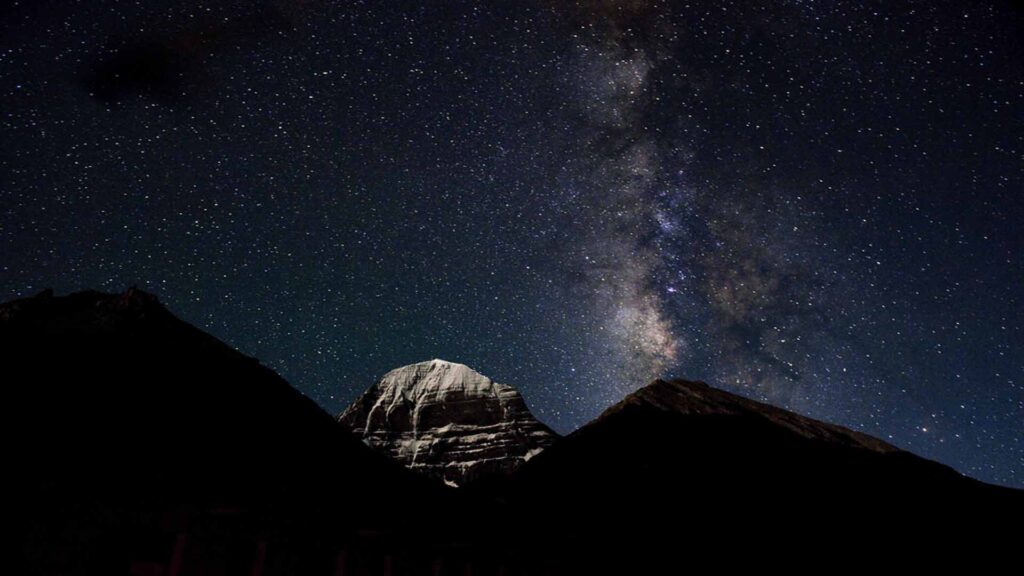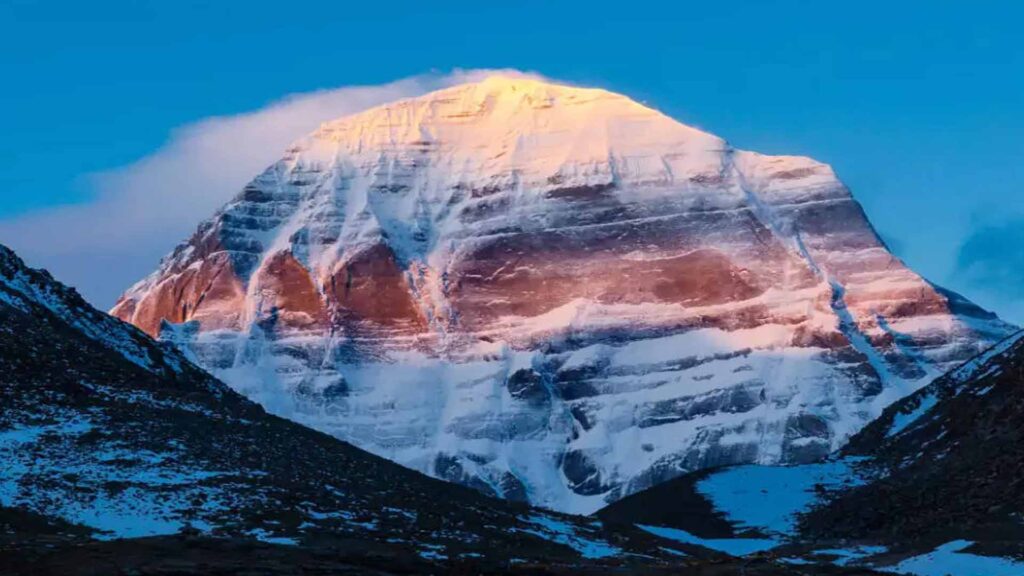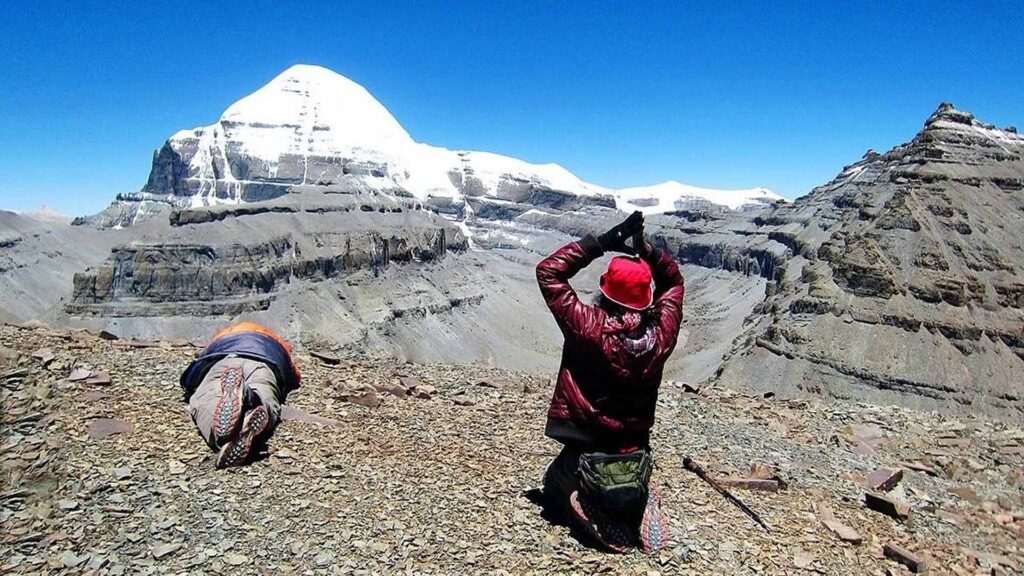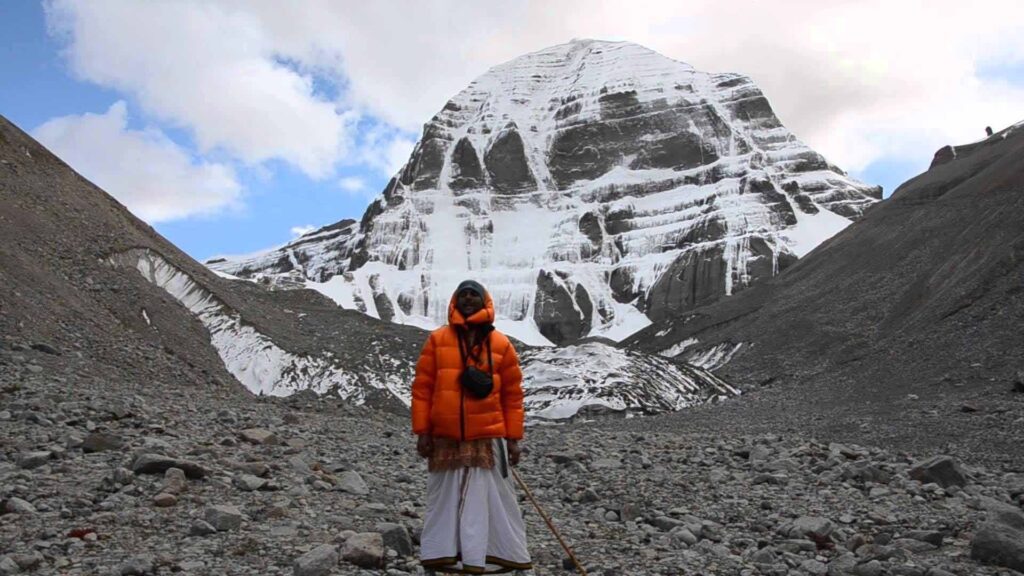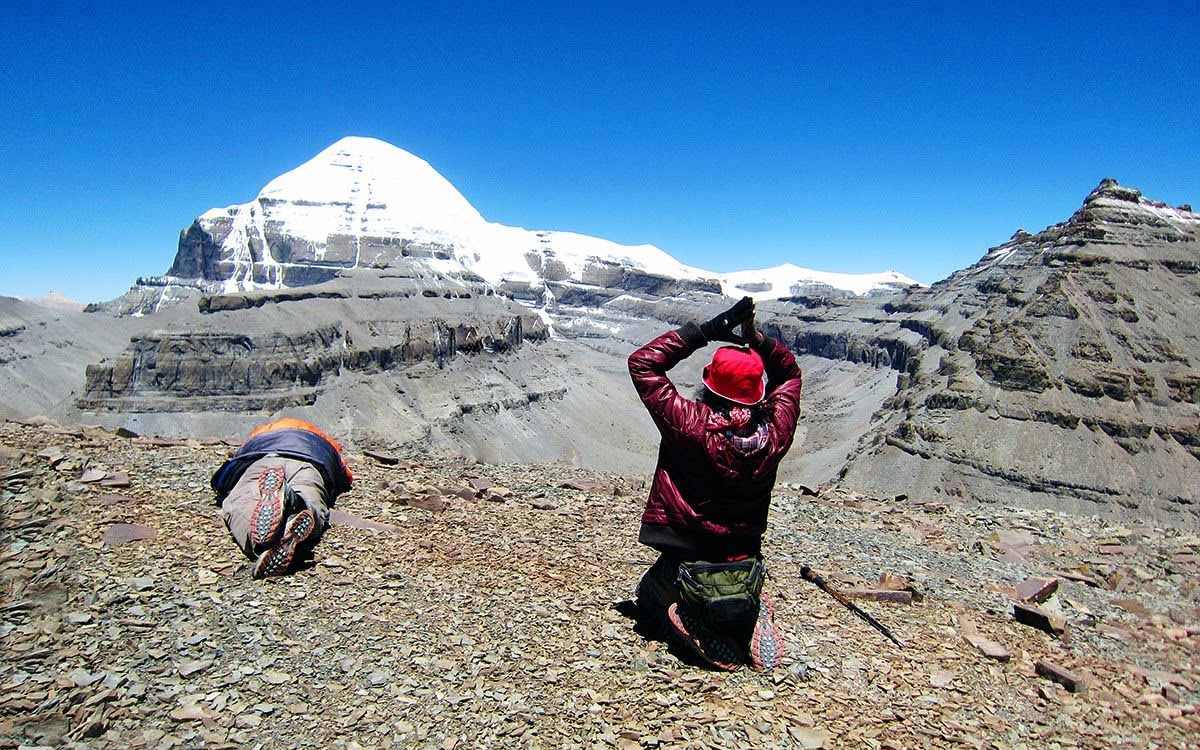Kailash Parvat, also known as Mount Kailash, is a peak located in the western part of the Himalayas in Tibet. It is considered one of the holiest mountains in the world and is revered by several religions.
Where is Kailash Parvat Located
Kailash Parvat is believed to be the abode of Lord Shiva, the Hindu god of destruction and transformation. According to Hindu mythology, Kailash Parvat is where Lord Shiva meditates and resides with his wife Parvati. It is also believed to be the source of the four major rivers of the Indian subcontinent: the Brahmaputra, the Sutlej, the Indus, and the Karnali.
Why is Kailash Parvat Considered Sacred
In Buddhism, Kailash Parvat is associated with the deity Demchok, who represents supreme bliss. It is believed that walking around the mountain (a practice known as Kora) can bring about enlightenment and liberation from the cycle of birth and death.
For Jains, Kailash Parvat is known as Astapada and is believed to be the place where the founder of Jainism, Rishabhadeva, attained Nirvana.
Kailash Parvat is also considered sacred by the Bon religion, which predates Buddhism in Tibet, and is believed to be the dwelling place of the deity Sipaimen.
Importance of Kailash Parvat in Different Religions
The importance of Kailash Parvat in different religions is significant as it represents a convergence of diverse religious beliefs and practices. It is considered a pilgrimage site for devotees of different faiths who visit to seek spiritual guidance, enlightenment, and blessings. The mountain’s cultural and religious significance has made it a UNESCO World Heritage Site.
Kailash Parvat Mystery
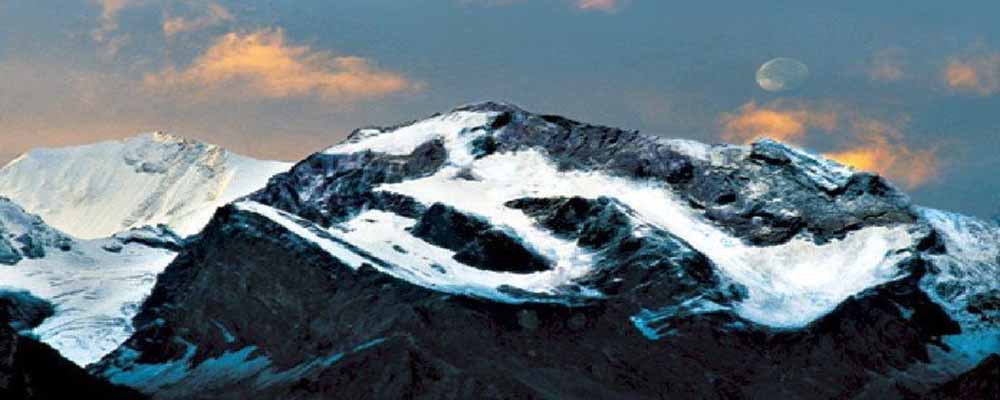
Kailash Parvat, also known as Mount Kailash, is considered a mystery by many due to its unique and unexplained physical features, as well as its spiritual significance. The mountain is revered by several spiritual traditions and is believed to be a gateway to higher consciousness and inner transformation.
One of the mysteries surrounding Kailash Parvat is its perfectly symmetrical shape, which is unlike any other mountain in the Himalayan range. Another mystery is the lack of any vegetation on the mountain, despite its relatively lower altitude. There are also several unexplained phenomena associated with the mountain, such as reports of strange lights, sounds, and sightings of UFOs.
Moreover, there are several legends and stories of miracles and divine encounters associated with Kailash Parvat, adding to its mystical and spiritual allure. Despite the mysteries surrounding it, Kailash Parvat continues to inspire and attract spiritual seekers from around the world, who are drawn to its power and spiritual significance.
Geographical and Geological Aspects of Kailash Parvat
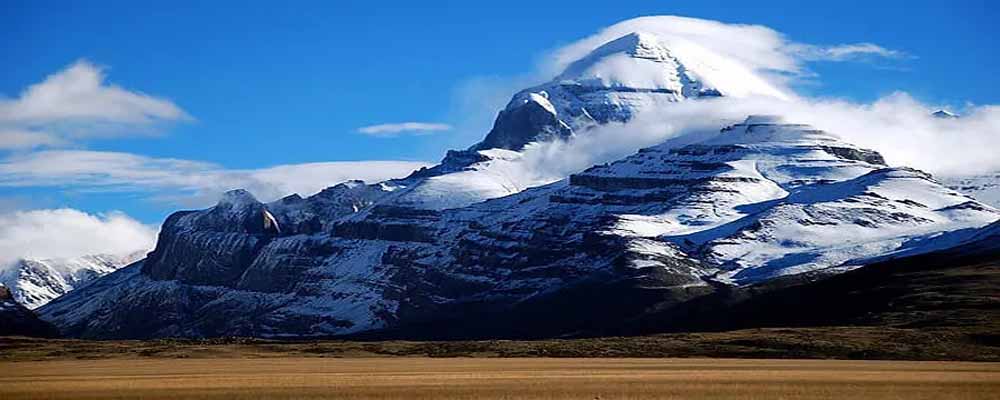
Geographical Location of Kailash Parvat
Kailash Parvat, also known as Mount Kailash, is located in the western part of the Tibetan Plateau, near the borders of India, Nepal, and China. It is considered a sacred mountain by several religions, including Hinduism, Buddhism, Jainism, and Bon.
Physical Features of Kailash Parvat
Kailash Parvat is a distinctive mountain with a unique shape, standing at a height of 6,638 meters. Its main peak resembles a pyramid and is made of black rock, while its other peaks are white in color. The mountain is located in a remote and barren region, surrounded by high-altitude plains and snow-capped peaks.
Geological Structure of Kailash Parvat
Geologically, Kailash Parvat is composed of several layers of sedimentary and igneous rocks, including granite, gneiss, and schist. The mountain is also located in an area of tectonic activity, with several faults and fractures running through the region.
Natural Resources and Biodiversity Around Kailash Parvat
The area surrounding Kailash Parvat is rich in natural resources, including mineral deposits such as copper, gold, and silver. The mountain itself is also considered a major source of spiritual energy by many, and is home to several rare and endangered species of plants and animals. The region is also known for its diverse and unique ecosystems, including alpine meadows, glaciers, and high-altitude deserts.
Historical Significance of Kailash Parvat
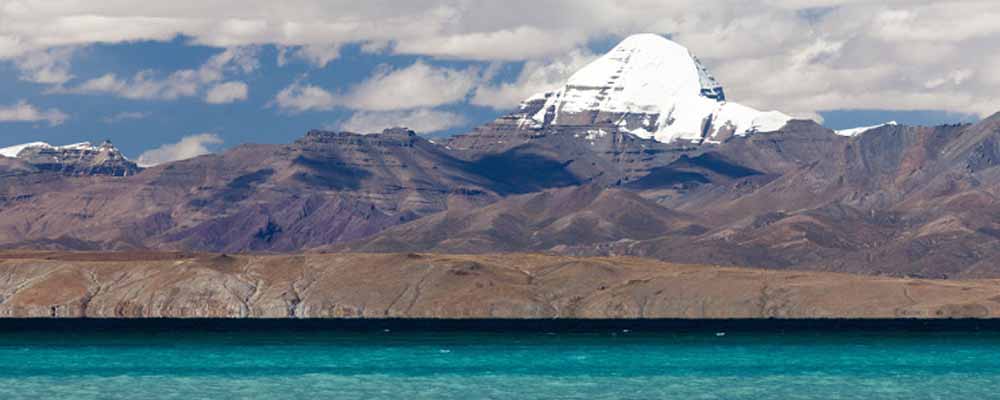
Kailash Parvat in Ancient Texts and Mythology
Kailash Parvat holds a significant place in the mythology and religious beliefs of several ancient cultures. In Hinduism, it is considered the abode of Lord Shiva and is believed to be the center of the universe. According to Hindu mythology, Lord Shiva meditated on Kailash Parvat for several years, and it is believed that he still resides there with his consort Parvati.
In Buddhism, Kailash Parvat is believed to be the home of Demchok, the wrathful deity of the highest yoga tantra, and is a significant pilgrimage site for Buddhists.
In Jainism, Kailash Parvat is believed to be the place where the founder of the religion, Rishabhdeva, attained nirvana.
Role of Kailash Parvat in the Silk Road
In ancient times, Kailash Parvat was an important stop on the Silk Road, the ancient trade route connecting China and the Mediterranean. Merchants and pilgrims traveling on the Silk Road would stop at Kailash Parvat to pay their respects and offer prayers.
Historical Events Related to Kailash Parvat
In the 19th century, the British explorer Sir Francis Younghusband led a military expedition to Tibet, which included a visit to Kailash Parvat. He documented his experiences in a book titled “The Heart of a Continent”, which helped to popularize the mountain and its significance in the West.
During the 20th century, Kailash Parvat became a point of contention between China and India. The two countries have disputed the border near the mountain, with India claiming that the region belongs to them, and China claiming that it is a part of their territory.
In recent years, Kailash Parvat has become a popular destination for tourists and spiritual seekers from around the world. The mountain and its surrounding region are now protected as a national park by the Chinese government, in order to preserve its unique natural and cultural heritage.
Religious Significance of Kailash Parvat
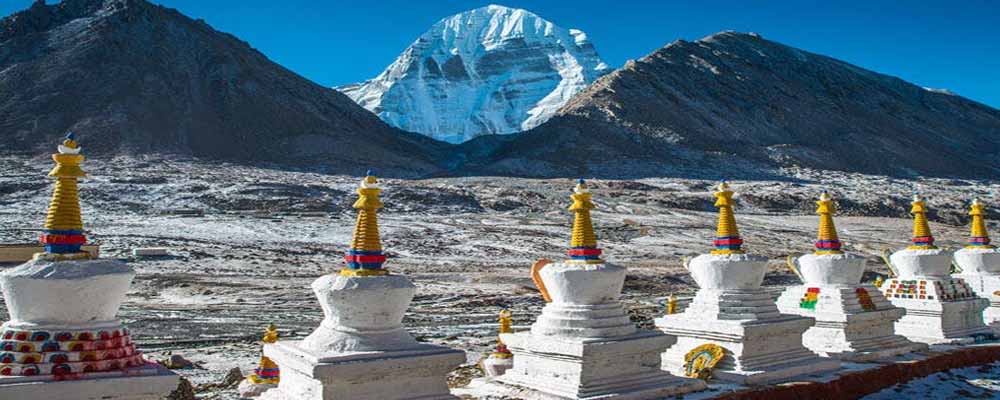
Kailash Parvat is considered a sacred mountain by several religions, each with its own unique interpretation and significance.
In Hinduism, Kailash Parvat is believed to be the abode of Lord Shiva, who is regarded as the supreme deity. The mountain is considered to be the center of the universe, and is believed to be the source of spiritual energy and power. Hindu pilgrims come to Kailash Parvat to perform the Kailash Mansarovar Yatra, a religious pilgrimage that involves circumambulating the mountain and bathing in the nearby Lake Mansarovar.
In Buddhism, Kailash Parvat is known as Kang Rinpoche or Gang Rinpoche, and is regarded as a sacred site associated with the bodhisattva Avalokiteshvara. The mountain is believed to represent the center of the world, and is associated with spiritual awakening and enlightenment. Buddhists often perform the Kora, or circumambulation, around the mountain as a form of spiritual practice.
In Jainism, Kailash Parvat is known as Mount Ashtapada, and is associated with the founder of Jainism, Lord Rishabhdev. The mountain is believed to be the site of his enlightenment, and is considered a place of spiritual significance for Jains. The Kailash Ashtapada Yatra is a pilgrimage that is often performed by Jains, in which they visit several holy sites associated with Lord Rishabhdev, including Kailash Parvat.
In the Bon religion, Kailash Parvat is regarded as a sacred site associated with the deity Tonpa Shenrab. The mountain is believed to represent the axis mundi, or the center of the world, and is associated with spiritual power and energy. Bon pilgrims often perform the Kora around the mountain as a form of spiritual practice.
Kailash Parvat also holds significance in other spiritual traditions, including the ancient Persian religion of Zoroastrianism, where it is believed to be the home of the god Zurvan. It is also revered by the Aghori sadhus, a sect of Hinduism, who see Kailash Parvat as a place of spiritual power and transformation.
Pilgrimage to Kailash Parvat
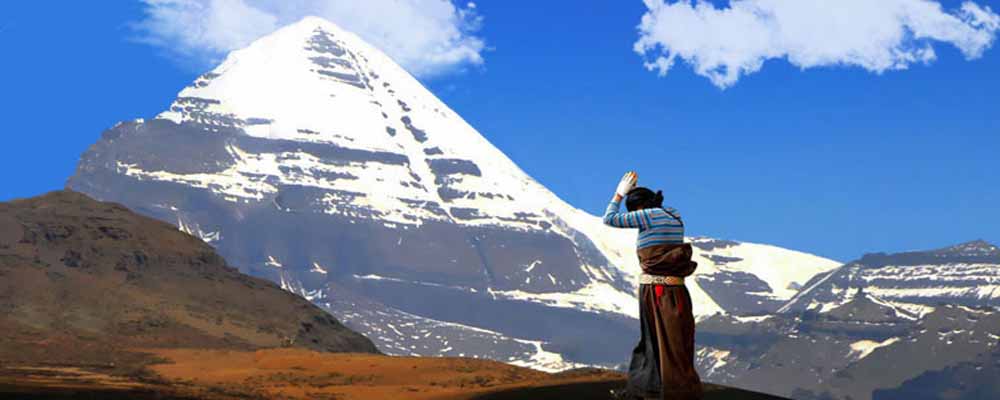
Pilgrimage to Kailash Parvat is a significant spiritual journey for many Hindus, Buddhists, Jains, and Bon followers. Here is some information on planning and preparing for a pilgrimage to Kailash Parvat.
Planning a Pilgrimage to Kailash Parvat:
- Obtain necessary permits and visas from the Chinese government.
- Choose a reputable tour operator that offers Kailash Mansarovar Yatra packages.
- Check the weather and choose the best time to visit (usually May to September).
- Train physically and mentally for the challenging trek and high altitude.
Trekking Routes and Transportation Options:
- The most common route for the Kailash Mansarovar Yatra is from Kathmandu, Nepal to the Tibetan plateau, through the Himalayan mountains.
- Trekking can take up to three weeks, depending on the route and pace.
- There are also helicopter tours available for those who are unable to trek.
Preparing for the Physical and Spiritual Challenges:
- Altitude sickness can be a problem at such a high altitude, so it is recommended to take precautions such as acclimatization and proper hydration.
- Prepare for long hours of trekking, often at high altitudes.
- It is also important to prepare mentally and spiritually for the pilgrimage, which involves many rituals and customs.
Rituals and Customs Associated with the Pilgrimage:
- Circumambulation of the mountain: One of the primary rituals associated with the pilgrimage to Kailash Parvat is the circumambulation of the mountain. Pilgrims walk around the mountain in a clockwise direction, which is known as a kora.
- Taking a dip in Lake Mansarovar: Pilgrims also visit Lake Mansarovar, which is considered a holy lake in many religions. It is believed that taking a dip in the lake can purify one’s sins.
- Offering prayers and performing rituals: Pilgrims offer prayers and perform rituals at various sites around Kailash Parvat, including the Tarboche flagpole, the Drolma La pass, and the Gauri Kund.
- Fasting and abstinence: Many pilgrims observe a period of fasting and abstinence during their journey, as a way to purify themselves and show devotion.
- Following a code of conduct: Pilgrims are expected to follow a code of conduct during their journey, which includes being respectful to other pilgrims, avoiding littering and polluting the environment, and refraining from engaging in any negative behavior.
Mystical and Spiritual Aspects of Kailash Parvat
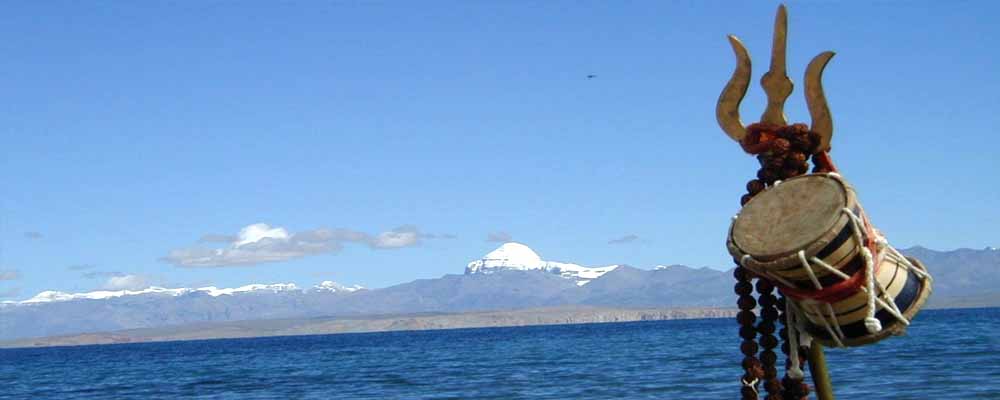
Kailash Parvat holds immense mystical and spiritual significance for many people, and has been a site for spiritual experiences, insights, and divine encounters. Here are some aspects of the mountain that are considered mystical and spiritual:
Spiritual Experiences and Insights of Pilgrims and Seekers at Kailash Parvat
Many pilgrims and seekers who have visited Kailash Parvat have reported experiencing a deep sense of peace, tranquility, and connectedness to the divine. Some have reported experiencing vivid dreams or visions, while others have had profound insights and realizations about themselves and the nature of reality.
Legends and Stories of Miracles and Divine Encounters at Kailash Parvat
There are numerous legends and stories of miracles and divine encounters associated with Kailash Parvat. For example, it is said that the Buddha visited Kailash Parvat and gave teachings there, and that the goddess Parvati, wife of Lord Shiva, bathed in the waters of Lake Mansarovar and became purified of her sins.
Kailash Parvat as a Gateway to Higher Consciousness and Inner Transformation
Many people believe that Kailash Parvat is a gateway to higher consciousness and inner transformation. The arduous journey to the mountain, with its physical challenges and spiritual practices, is seen as a way to purify one’s mind and body and connect with the divine. Some seekers believe that Kailash Parvat has the power to catalyze spiritual awakening and enlightenment.
Kailash Parvat as a Symbol of the Ultimate Reality or Enlightenment
In many spiritual traditions, Kailash Parvat is seen as a symbol of the ultimate reality or enlightenment. The mountain is seen as a manifestation of the divine, and a reflection of the true nature of reality. Many seekers believe that by connecting with the mountain, they can connect with the ultimate reality and experience a state of higher consciousness.
Environmental and Cultural Challenges at Kailash Parvat
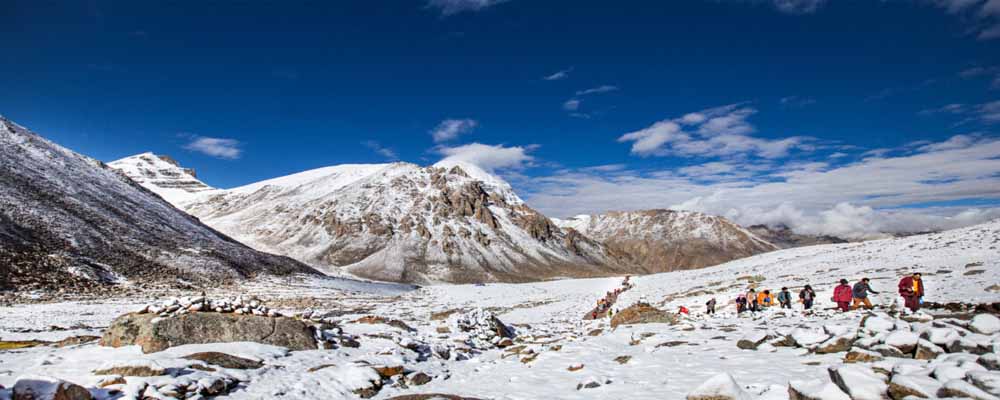
Kailash Parvat is a site of great environmental and cultural significance, but it also faces numerous challenges related to environmental degradation, cultural impact, and conflicting interests. Here are some of the challenges facing Kailash Parvat:
Environmental Issues and Conservation Efforts Around Kailash Parvat:
The area around Kailash Parvat is ecologically fragile, with a delicate ecosystem that is vulnerable to damage. Activities such as waste disposal, deforestation, and overgrazing have resulted in soil erosion, water pollution, and damage to vegetation. To address these issues, conservation efforts have been undertaken by various organizations and governments, including initiatives to promote sustainable tourism, reforestation, and waste management.
Cultural and Social Impact of Tourism and Pilgrimage on the Local Communities:
The increase in tourism and pilgrimage to Kailash Parvat has had a significant impact on the local communities, who are often involved in providing services to pilgrims and tourists. While tourism can bring economic benefits to these communities, it can also result in cultural and social changes that can threaten their way of life and traditions. The influx of people can also lead to overcrowding and strain on resources, such as water and energy.
Conflicts and Controversies Related to the Management and Development of Kailash Parvat
The management and development of Kailash Parvat is a subject of much debate and controversy. There are conflicting interests and priorities among various stakeholders, including local communities, governments, religious organizations, and conservation groups. For example, some groups advocate for increased tourism and development to boost economic growth, while others emphasize the need for conservation and protection of the environment and cultural heritage.
Conclusion
Kailash Parvat is a sacred mountain located in the Himalayas, revered by many spiritual traditions and considered a symbol of the ultimate reality or enlightenment. It is believed to be a gateway to higher consciousness and inner transformation, and has been a site for spiritual experiences, insights, and divine encounters.
However, Kailash Parvat also faces environmental and cultural challenges, such as the impact of tourism and pilgrimage on the local communities, and the need for conservation efforts to protect the mountain and its biodiversity.
Despite these challenges, the spiritual legacy of Kailash Parvat continues to inspire people around the world to seek deeper meaning and connection with the divine. Its message of unity, peace, and compassion is particularly relevant in our times, when there is a need for greater understanding and harmony among different cultures and religions.
As we reflect on the significance of Kailash Parvat, we are invited to explore our own connection with the mountain and its spiritual legacy. Whether through pilgrimage, meditation, or simply contemplating its beauty and power, we can find inspiration and guidance on our own spiritual journey.
FAQs About Kailash Parvat
What are the secrets of Kailash Parvat?
Mount Kailash is a sacred site for Hindus, Buddhists, Jains, and Bonpos, and is believed to be the abode of Lord Shiva in Hinduism. There are various myths and legends associated with the mountain, but there are no confirmed “secrets” as such.
Why Mount Kailash has never been climbed?
Mount Kailash is considered a sacred mountain in several religions, and climbing it is prohibited. It is believed that doing so would be disrespectful to the gods and could bring bad luck. Additionally, the mountain is considered a challenging climb, with harsh weather conditions and difficult terrain.
What did NASA find on Mount Kailash?
To the best of my knowledge, NASA has not made any significant discoveries on Mount Kailash. However, the mountain is considered a sacred site and is of cultural and religious significance to several communities.
Who is the first person to climb Kailash Parvat?
As mentioned earlier, climbing Mount Kailash is prohibited, and it is considered disrespectful to attempt to do so. Therefore, there is no record of anyone having climbed the mountain.
How old is Mount Kailash?
The exact age of Mount Kailash is not known. However, it is estimated to be around 30 million years old, based on geological studies of the region.
Who tried to lift Kailash Parvat?
As far as I know, there is no record of anyone attempting to “lift” Mount Kailash. The mountain is considered a sacred site, and climbing it is prohibited. Additionally, it is a massive mountain, with a height of over 22,000 feet, and lifting it would be impossible.
Kailash Parvat Images
